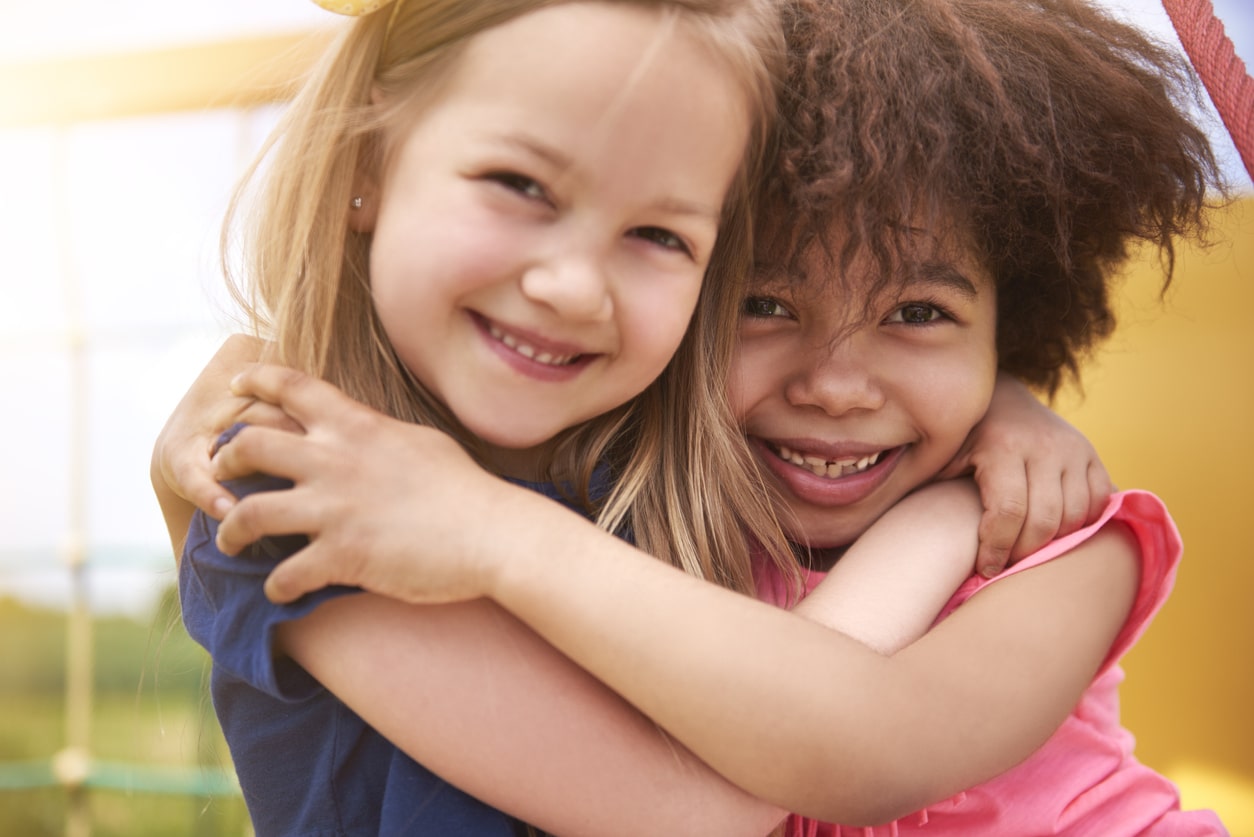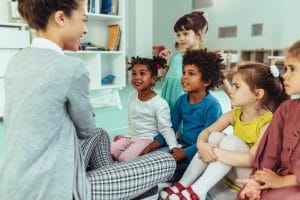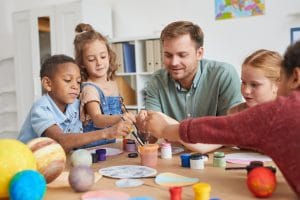Positive, Supportive Relationships Are One of the Most Powerful Tools for Educators
- VKRP and ECE Resource Hub Staff

 At VKRP, we know that the connections you’re building with children don’t just make your students feel warm and fuzzy. Responsive, positive, and sensitive relationships between teachers and students allow children to learn and grow across all areas of development. When students feel safe and connected, they are able to fully explore and engage in the world around them.
At VKRP, we know that the connections you’re building with children don’t just make your students feel warm and fuzzy. Responsive, positive, and sensitive relationships between teachers and students allow children to learn and grow across all areas of development. When students feel safe and connected, they are able to fully explore and engage in the world around them.
So, how can we build and sustain positive teacher-child relationships to support student learning and development? Successful relationship building will not be a one and done activity or something we check off the list shortly after Labor Day. We plant the seeds of relationship building in the beginning of the year, but the flower needs consistent nurturing throughout the year to continue to thrive.
Below, you’ll find a few quick tips from our friends at the ECE Resource Hub on relationship-building techniques you can use to enhance the quality of interactions between teachers and children.
Ways to Intentionally Build Relationships
 Learn about each child’s preferences, interests, background, and culture. Start conversations with children and their families about their ideas, desires, experiences, and traditions. These conversations should happen both at the start of the year and in your day-to-day interactions. Seek to recognize and welcome children’s unique linguistic, racial/ethnic, and cultural backgrounds. For example, learn how to greet children in their home languages, or learn key words that may comfort them in their home language.
Learn about each child’s preferences, interests, background, and culture. Start conversations with children and their families about their ideas, desires, experiences, and traditions. These conversations should happen both at the start of the year and in your day-to-day interactions. Seek to recognize and welcome children’s unique linguistic, racial/ethnic, and cultural backgrounds. For example, learn how to greet children in their home languages, or learn key words that may comfort them in their home language.- Aim for at least 5 positives for every 1 correction. Sometimes children hear many more corrections than positive comments. Provide positive attention and feedback as often as possible. This is especially important for children that may often hear more corrective feedback or redirection.
- Provide individually and culturally responsive support for children’s emotional experiences. Emotional expression varies across children. Some children may need more scaffolding as they develop self-regulation skills and learn to appropriately identify and express emotions. Children may also be expected to navigate emotions in different ways at home. Seek to learn about and honor how each child and family talks about and works through emotions.
- Reflect on how your own feelings, backgrounds, and biases may influence your expectations about students’ experiences. The teacher-child relationship really is the gatekeeper to opportunity. It can be the reason that a child thrives or the reason they struggle in the classroom.

Let’s be clear: No teacher would ever intentionally deny a child the chance to learn. But it’s also true that we feel closer to some children than others. Sometimes that’s because we can see some of ourselves in them. Maybe we’re of the same race, from similar cultural backgrounds, we live and socialize in the same areas, or speak the same language.But there are also reasons why we don’t form strong connections with children. And those reasons could be due, in part, to the implicit biases we bring into our classrooms. Implicit biases are those beliefs, perceptions, and feelings that affect our thoughts and actions without us being totally aware of them. Implicit biases can prevent us from building relationships with children.
Remote relationships are not the same as in-person relationships with students. We must also acknowledge the impact that the pandemic is having on our ability to connect with children. We are so used to seeing and being close to children every day. But, virtual, hybrid, and physically- distant learning adds a new barrier to building relationships.
Since we know that relationships are the gatekeeper of opportunities and we know there are plenty of barriers that could get in our way, we need to be thoughtful and intentional about building and maintaining strong and positive teacher-child relationships.
Relationship Check!
 It’s important to take the time to reflect on our relationships with children. Take a minute to consider:
It’s important to take the time to reflect on our relationships with children. Take a minute to consider:
- Did you start out strong with a “Getting to know you” week or a heavy focus on relationships in August/September and that has waned over time?
- Are you still making relationship building a focus in your classroom?
- Do you intentionally plan to strengthen relationships with every child?
- How can you continue this focus, either formally through instruction or informally through interactions, regularly throughout the year?
- How can you encourage positive peer to peer relationships in your classroom?
For more ideas including strategies, video examples, and activity cards, check out the ECE resource hub’s Teacher-child Relationships page!
More questions? VKRP provides support via the online chat feature when you are in the system, via email vkrp@virginia.edu, and via toll free 866-301-8278 ext. 1

